In this article, we review the $229 USD Topping M50 Desktop Digital Music Player.
Disclaimer: ShenzhenAudio sent us the Topping M50 for this review, free of charge. We thank them for this opportunity. All thoughts and experiences with the product are naturally my own.
Topping
Topping Electronics & Technology, known as ‘TOPPING’, is based in Guangzhou, China, and was established in 2008. They design some of the best DACs and AMPs when it comes to the price-to-performance ratio. They have a dedicated R&D team of skilled engineers and audiophiles. In addition to that, they are heavily invested in the latest audio testing machinery such as the APx555 from Audio Precision. Of course, all of this means one thing for us consumers, better devices!
I have used many Topping products in the past, the oldest two I remember are the TP30 and the NX1. The year was 2013 I believe. I never had any problems with their products despite using 30+ of them throughout the years. They have a really good track record, performance-wise, in my book. Today we are reviewing the M50, the first member of the company’s new product line. The M50 is the first dedicated digital player from Topping. Topping states that their customers have been demanding a dedicated player for a long time and the M50 was produced in response to this demand. If you want to check out more Topping gear, you can find all of our related reviews here.
Topping M50 Digital Music Player with Bluetooth & WiFi
Topping M50’s dedicated web page can be found here. It costs $229 USD from Shenzhen Audio.
The Topping M50 is a dedicated, desktop, digital music player that can decode PCM up to 24bit-768kHz and DSD up to DSD256 natively. It also comes with a wide range of I/O options and wireless capability. You can find the specifications and highlights, below.
Here are the highlights of the Topping M50 Desktop Digital Music Player.
- 10+ File Format Support
- PCM 24bit-768kHz and DSD 256 Support
- 10-band EQ Support
- Bluetooth and WiFi Capability
- LDAC / AAC / SBC / APTX Codec Support
- USB OTG & Micro SD Support
- Rich I/O
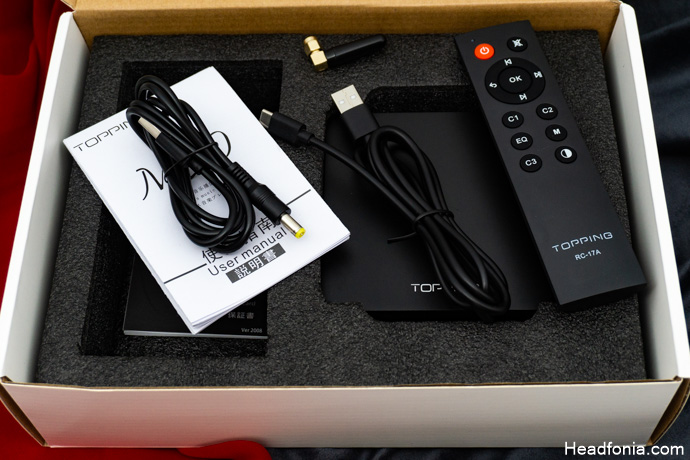
Packaging & Accessories
Topping company has switched to new packaging with the DX5 DAC & AMP that we have reviewed recently. Unfortunately, the M50 does not come with this packaging style, even though it is a newer product and came out after the DX5. The M50 comes with the old packaging that Topping was using for more than 2 years. A simple white cardboard box with a foam compartment to prevent damage during transportation.
The device we see when we open the box is quite small and this is surprising. One expects a digital player to be a little bigger, but this miniature form factor looks pretty sweet too. As for accessories, the device comes with a manual booklet, a USB-A to USB-C data cable, a power cable with a dc 5v barrel connector, an antenna, and a remote controller. The quality of the accessories is good and the inclusion of a remote is always welcome.
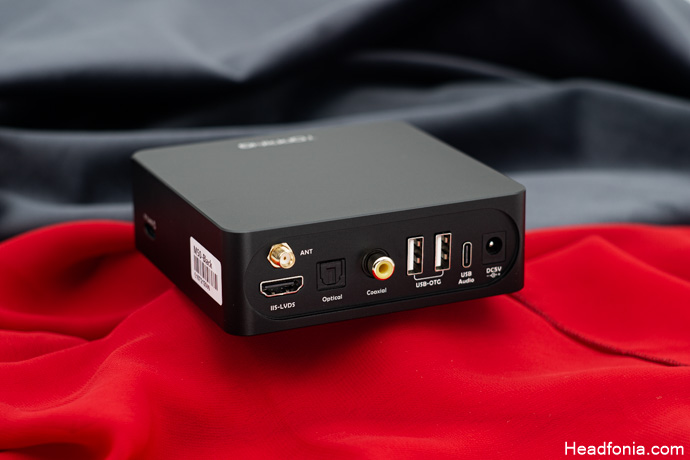
Design & Build Quality
Measuring 11.9 x 3.8 x 11.1 centimeters, the M50 is TINY! It won’t take much space on your desk. However, it is not a very light device around 500 grams so you can’t just velcro it anywhere you want. That was the first thing I thought when I saw the size of it, haha! The player is available in two colors. There is the metallic silver variant and the metallic black variant. I have the black version and it looks great. It has a cubic design, just like the D50s and the A50s. The chassis is CNC precision milled as usual and I couldn’t find any milling defects. However, there are various buttons on the front side and some of them are slightly wobbly. That’s not something we encounter very often with Topping products. It does not in any way affect the usage but it’s something to be aware of. Anyway, now that we talked about buttons, let me walk you through the device layout.
The device’s entire I/O options are located on the rear side. The front side, however, is where the magic happens. In the middle, we have a small, colored display. On the left side of the display, we have a single, power button that also acts as a standby toggle. On the right side of the display, we have 5 navigation buttons. The markings under the buttons are clear and easy to understand. In my opinion, the device could have been a little bigger so it could have had a bigger screen for us to read more comfortably.
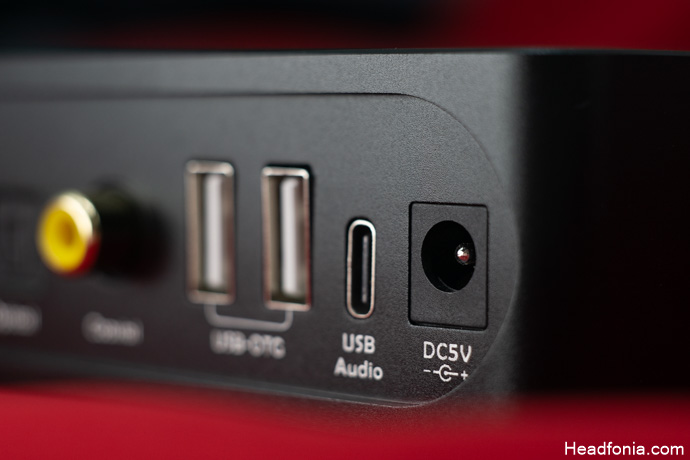
Let’s take a look at the rear side. Topping offers us many ways to integrate this little box into our system. From left to right, we have an IIS (I2S)-LVDS connector, optical, coaxial, two USB-OTGs, USB-C, and of course the DC5V barrel power socket. On the side of the unit, there is a micro SD slot that supports cards up to 256 GB.
Overall, I like the anodized black finish and of course the all-aluminum cubic chassis. The sockets and ports on the back feel rigid and durable as well. Apart from the wobbly buttons, the device does not have any build issues. We’ll talk more about the display, soon.
The review continues on Page Two, after the click HERE or by using the jump below.
Page 2: Features, Controls & UI, Last Words







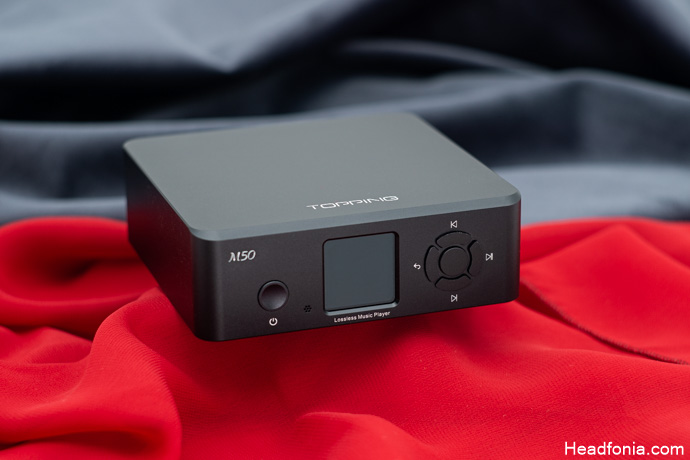
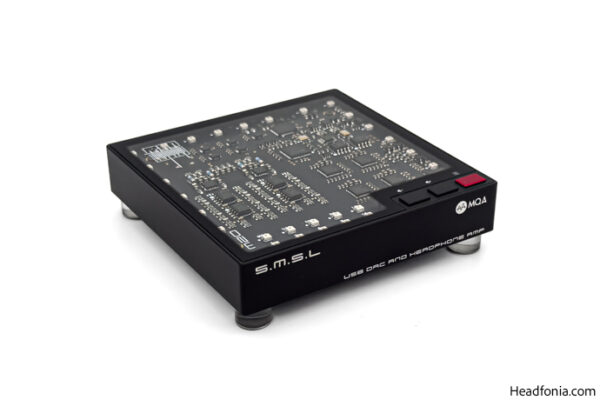
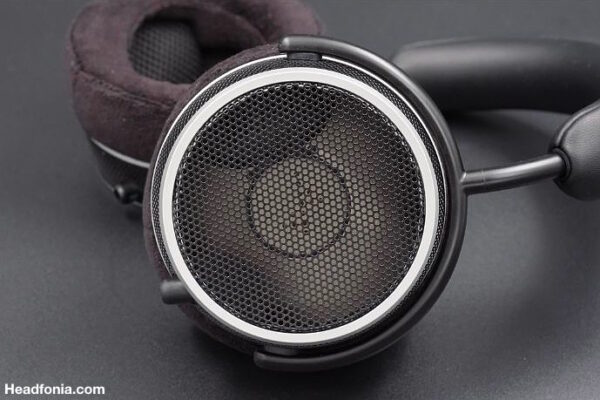
Jason Rogers
I am a massive Topping fan, I have E30 DAC serving my PC, they make the Adams T5V active speakers sing ever so gloriously.
I was looking at the M50 digital player for my AV home theatre system and the price was reasonable but came across the Aune Xe, for £30 extra, this device has the ability to play DSD512.
Small device like the M50 and no wobbly buttons. The structural integrity is actually very good and in terms of the sound quality, it is comparable to the E30.
It should be on your short list if you’re on a budget.
Guy Lamaar
How does this compare to the xDuoo X10T II?
Yagiz
I don’t own that device, but I took a quick look at its specs. The biggest difference seems to be that xDuoo is portable thanks to its internal battery. The format support and rates are similar, but xDuoo can’t do LDAC.